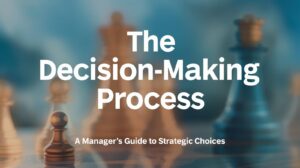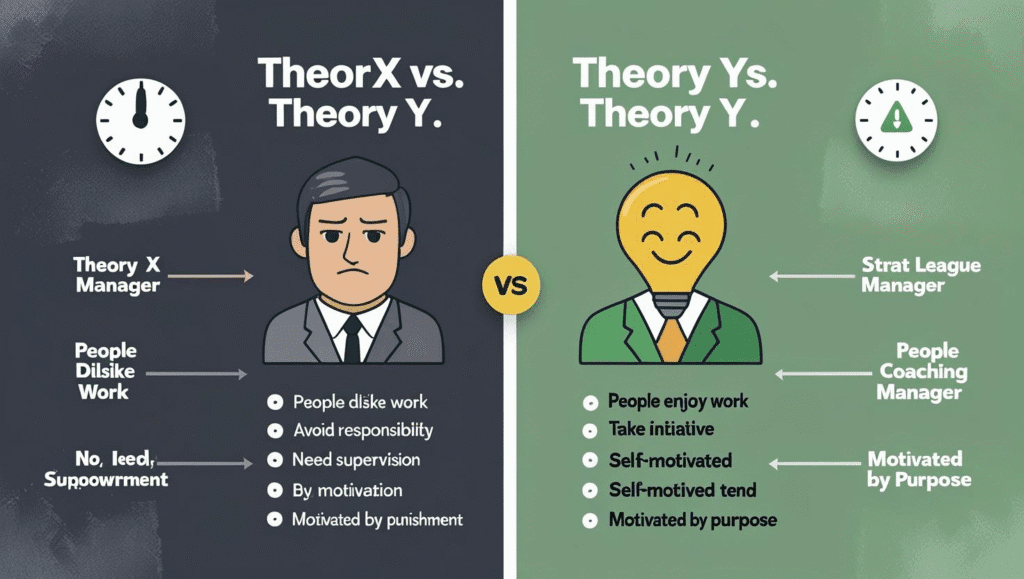The 7 Steps of the Decision-Making Process: A Manager’s Guide
As of July 28, 2025, the ability to make timely, well-reasoned decisions is a critical skill for success in any field. From a CEO in a Fortune 500 company to a small business owner in a competitive market, decision-making is a constant. While simple choices can be made instantly, complex and high-stakes decisions benefit immensely from a structured, rational process. This 7-step framework provides a logical path to break down complex problems, evaluate options objectively, and arrive at a more effective and defensible conclusion.
A Practical Example: The Shipping Cost Problem
To make these steps clear, we will follow a single, consistent example: A mid-sized e-commerce company based in Denver, Colorado, has seen its shipping costs increase by 30% over the past year, significantly hurting its profitability. The Operations Manager is tasked with making a decision to solve this problem.
-
Step 1: Identify and Define the Decision
The first and most critical step is to clearly understand the problem you are trying to solve. A poorly defined problem leads to a poor decision. You must frame the decision in a way that is specific, measurable, and focused on the true issue, not just its symptoms.
Example: The initial problem is “shipping costs are too high.” A better, more precise decision statement is: “Select a new shipping carrier or strategy to reduce our average cost-per-package by at least 15% within six months, without increasing average delivery time to the customer.” -
Step 2: Gather Relevant Information
Once the decision is defined, you need data. This step involves collecting information from a wide range of internal and external sources to fully understand the situation. The goal is to become an expert on the problem before you attempt to solve it.
Example: The manager gathers:- Internal Data: 12 months of shipping invoices from their current carrier (FedEx), data on package weights and destinations, and current delivery speed metrics from their Shopify dashboard.
- External Data: Competitors’ shipping policies (e.g., “Free 2-Day Shipping”), public rate cards from UPS and USPS, and research on multi-carrier shipping software.
-
Step 3: Identify the Alternatives
With a solid base of information, you can now brainstorm potential courses of action. It’s important to be creative and generate a list of several distinct options. Avoid settling on the first alternative that comes to mind.
Example: The manager brainstorms four potential alternatives:- A) Renegotiate: Use the gathered data to negotiate a better rate with the current carrier, FedEx.
- B) Switch Carriers: Move 100% of their shipping volume to a single competitor, like UPS.
- C) Multi-Carrier Software: Implement a system (like ShipStation) that automatically selects the cheapest carrier for each individual package.
- D) Regional Carriers: Use a network of smaller, regional carriers for deliveries within specific zones.
-
Step 4: Weigh the Evidence & Evaluate Alternatives
This is the analysis phase. You must assess each alternative against a set of key criteria. These criteria should flow directly from the decision you defined in Step 1. A decision matrix or a simple pro/con list can be extremely helpful here.
Example: The manager evaluates each of the four alternatives against these criteria:- Projected Cost Savings: How likely is it to meet the 15% goal?
- Implementation Complexity: How much work is required to set it up?
- Impact on Delivery Speed: Will it be faster, slower, or the same?
- Risk: What could go wrong with this option?
-
Step 5: Choose Among Alternatives
After a thorough evaluation, it’s time to make the call. The best choice is the one that most successfully meets the criteria you’ve established. This decision should be logical and based on the evidence you’ve weighed.
Example: After analysis, the manager chooses Alternative C (Multi-Carrier Software). While more complex to implement than simply switching to UPS, it offers the highest projected cost savings (18-22%) and maintains delivery speed, making it the optimal choice based on the evidence. -
Step 6: Take Action & Implement the Decision
A decision without action is useless. This step involves creating a concrete plan to put your choice into effect. This means assigning tasks, setting deadlines, and communicating the plan to all stakeholders who will be affected by the change.
Example: The manager creates an implementation plan:- Week 1-2: Sign contract with ShipStation and begin software integration.
- Week 3: Hold training sessions with the warehouse fulfillment team.
- Week 4: Run a one-week trial with 10% of shipments.
- Month 2: Go live with the new system for all shipments.
-
Step 7: Review Your Decision & Its Consequences
The final step is to evaluate the outcome. Did your decision solve the problem you identified in Step 1? This involves tracking the results, gathering feedback, and being willing to adjust your course if the initial decision isn’t producing the desired results.
Example: Six months later, the manager reviews the shipping data. They find that costs are down an average of 19% (exceeding the goal) and delivery speeds are stable. However, they also see a small increase in fulfillment errors. They decide to hold a follow-up training session with the warehouse team to address this new, minor issue.
Conclusion: From Guesswork to a Strategic Competency
Following a structured decision-making process transforms a potentially chaotic and emotional choice into a logical and manageable task. This 7-step model forces clarity, encourages data-driven analysis, and creates a transparent and defensible rationale for your final choice. By practicing this framework, individuals and organizations can move beyond simple guesswork and develop decision-making into a true strategic competency that drives better outcomes.
Frequently Asked Questions
Rational decision-making is the structured, 7-step process described above. It’s analytical, data-driven, and deliberate, best suited for complex, high-stakes decisions. Intuitive decision-making is based on “gut feeling,” experience, and pattern recognition. It’s fast and can be effective for experts in their field making time-sensitive choices, but it’s also more prone to personal biases.
Not at all! The same 7-step process is incredibly effective for major personal decisions. You can use it to choose a college, decide whether to accept a job offer in a new city, or select the right car to buy. The framework helps you organize your thoughts and make a choice that aligns with your personal goals and values.
“Analysis paralysis” is the state of over-thinking a decision to the point that a choice is never made. It often happens in Step 2 (Gathering Information) and Step 4 (Weighing Evidence). To avoid it, set deadlines. Give yourself a specific amount of time for research and analysis. Remember that you will never have 100% of the information; the goal is to make the best possible decision with the information you can reasonably gather in a timely manner.


